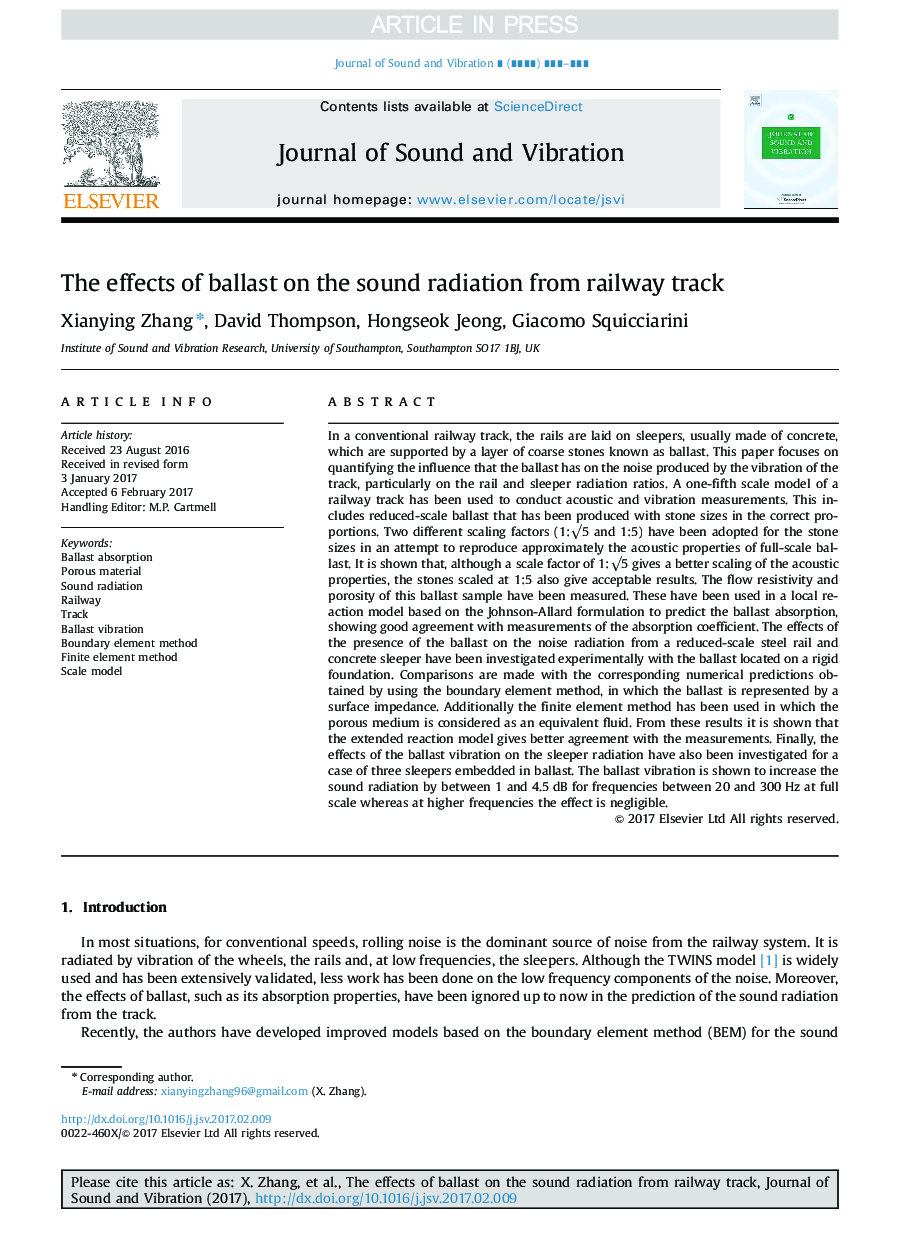| Article ID | Journal | Published Year | Pages | File Type |
|---|---|---|---|---|
| 4924204 | Journal of Sound and Vibration | 2017 | 14 Pages |
Abstract
In a conventional railway track, the rails are laid on sleepers, usually made of concrete, which are supported by a layer of coarse stones known as ballast. This paper focuses on quantifying the influence that the ballast has on the noise produced by the vibration of the track, particularly on the rail and sleeper radiation ratios. A one-fifth scale model of a railway track has been used to conduct acoustic and vibration measurements. This includes reduced-scale ballast that has been produced with stone sizes in the correct proportions. Two different scaling factors (1:â5 and 1:5) have been adopted for the stone sizes in an attempt to reproduce approximately the acoustic properties of full-scale ballast. It is shown that, although a scale factor of 1:â5 gives a better scaling of the acoustic properties, the stones scaled at 1:5 also give acceptable results. The flow resistivity and porosity of this ballast sample have been measured. These have been used in a local reaction model based on the Johnson-Allard formulation to predict the ballast absorption, showing good agreement with measurements of the absorption coefficient. The effects of the presence of the ballast on the noise radiation from a reduced-scale steel rail and concrete sleeper have been investigated experimentally with the ballast located on a rigid foundation. Comparisons are made with the corresponding numerical predictions obtained by using the boundary element method, in which the ballast is represented by a surface impedance. Additionally the finite element method has been used in which the porous medium is considered as an equivalent fluid. From these results it is shown that the extended reaction model gives better agreement with the measurements. Finally, the effects of the ballast vibration on the sleeper radiation have also been investigated for a case of three sleepers embedded in ballast. The ballast vibration is shown to increase the sound radiation by between 1 and 4.5Â dB for frequencies between 20 and 300Â Hz at full scale whereas at higher frequencies the effect is negligible.
Keywords
Related Topics
Physical Sciences and Engineering
Engineering
Civil and Structural Engineering
Authors
Xianying Zhang, David Thompson, Hongseok Jeong, Giacomo Squicciarini,
